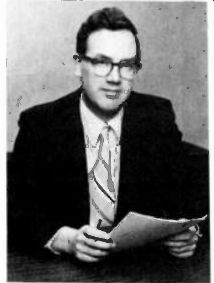
The Federal Communications Commission has in the last couple of years proposed a number of controversial actions, the technical implications of which may not be well understood even by the FCC itself. The FCC has proposed 9kHz AM broadcast spacing, essentially eliminated the clean channel concept, proposed a number of "drop-in" TV licenses (stations with less than the formerly required geographical spacing), proposed elimination of the first class commercial radio telephone license, and, it is rumored, considering also eliminating the second class, and, required licensing of low power TV stations (allowing former repeaters to originate programming). The FCC also suggested assigning FM broadcast stations to 100 KHz spacing instead of the present 200 KHz and first approved and then in the face of protests, rescinded its approval of the Magnavox system of AM stereo. Also before the FCC is Comsat's proposal for direct broadcast satellite television and CBS' proposal for adoption of the French Telidon teletext system.
Why have most of these things been done or proposed? The reasons are basically social and political -opening broadcasting opportunities to minorities, etc. While some of these proposals have been suggested as part of a policy of deregulation there is some suspicion that that elimination of the first class radio telephone license would simply make operation of the new broadcast stations less costly.
What could this mean to most of you? If the technical consequences of these are misjudged by the FCC--a political not technical body for the last few years--you may be explaining a lot to some of your customers, if, for instance, you are in one of those areas designated for a drop-in TV station. Some of your customers may have large antenna installations dedicated to receiving from a considerable distance the channel of the drop-in, (or an adjacent channel) and may not be too happy about having interference from the new station. Or if the AM broadcast band goes to 9kHz spacing many listeners will wonder why their favorite stations have moved -how many sets of car radio pushbuttons will have to be reset for people who do not understand what happened? And they will also wonder, why the interference they didn't experience before is there now. FM channel spacing of 100kHz would pose serious interference problems with millions of less than the highest quality receivers. Judging form the amount of dead air, misadjusted video tape equipment, etc., seen and heard on our local radio and television stations (one of our remote controlled stations broke in with its automatic ID every few minutes most of one afternoon a while ago), we need better technical supervision, not less as implied by the abolishment of the first class license.
Mostly I hope that the FCC will make its decisions without equivocation. We still don't have a decision or AM stereo since the FCC first approved, about a year ago, and then in the face of some protest rescinded its approval, of the Magnavox system. What will happen when stereo sound for television and a teletext system come under consideration? Let's hope we can understand what they are doing.
ON THE COVER: Capacitors of outwardly equivalent appearance can vary widely in characteristics. The lowly disc capacitor is available with many different temperature, frequency and voltage characteristics. For some timely information on selecting replacements, see this page.
Sincerely,
Walter H. Schwartz, Editor (Duluth)
Please send all advertising material to:
ET/D, Production Mgr.
120 West Second Street
Duluth, Minn. 55802
(218) 727-8511
HARCOURT BRACE JOVANOVICH PUBLICATIONS
(source: Electronic Technician/Dealer)